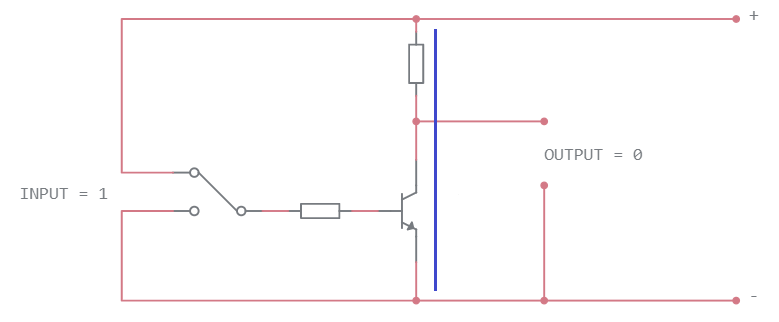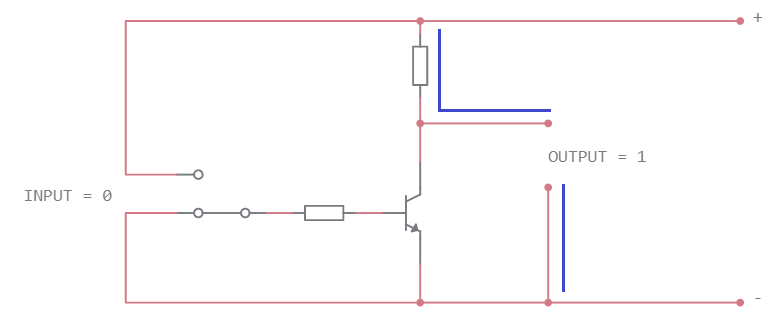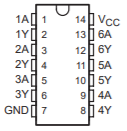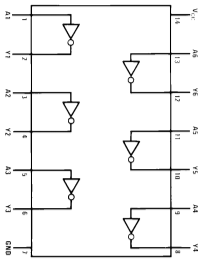Back to: POWER SUPPLIES
What is a NOT gate?
A NOT gate has one input and one output. It is called a NOT gate because its output level is NOT the same as its input level. When the input is 0, its output is 1. When its input is 1, its output is 0. We can also say that a NOT gate INVERTS the input level. For this reason, the NOT gate is also called an inverter.
How can we construct a NOT gate?
There are numerous ways but the way that I want to show you is using a switch, resistors and a transistor.
Figure 1.1 is a NOT gate that has its input connected to a positive voltage. The transistor is switched on and the path through the collector and emitter is like a short circuit (this is known as saturation). This results in the output being off, since it is not the path of least resistance.
We can say that when the INPUT is ON, the OUTPUT is OFF.
Or when the INPUT is 1, the OUTPUT is 0.
Or, using Boolean algebra we can say INPUT = OUTPUT

Figure 1.2 is a NOT gate that has its input connected to a negative voltage. The transistor is switched off and the path through the collector and emitter is like an open circuit and current cannot pass through (this is known as cut-off). This results in the output being on, since it is the path of least resistance.
We can say that when the INPUT is OFF, the OUTPUT is ON.
Or when the INPUT is 0, the OUTPUT is 1.
Or, using Boolean algebra we can say INPUT = OUTPUT

Truth table for a NOT gate
| INPUT | OUTPUT |
| 0 | 1 |
| 1 | 0 |
Symbol for a NOT gate

A bubble is placed on the output to indicate the inversion.
7404 hex inverter
There are a number of ICs that contain NOT gates. In the 74 series one of these is the 7404. This is a 14 pin IC, containing 6 NOT gates.
Figure 1.3 shows the pinout of a 7404. The negative voltage needs to be applied to pin 7 and the positive voltage to pin 14.

If you look at figure 1.4 you can see how the NOT gates are arranged.
